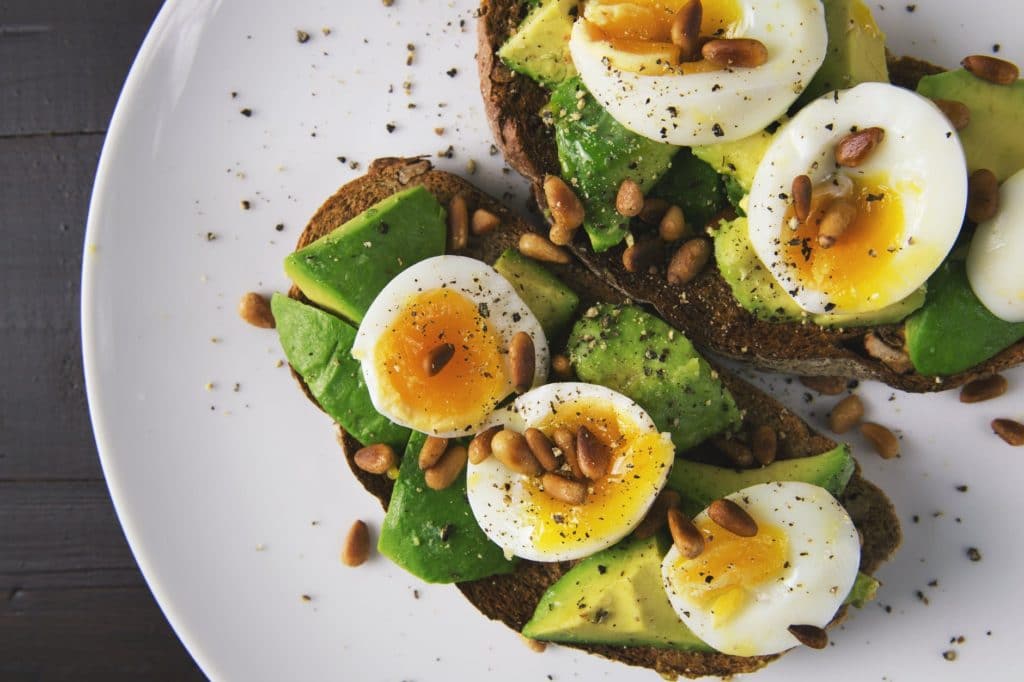
“The real beauty is that you don’t have to cut or “burn” the fat off after. This is a very slow bulking process, that results in mostly muscle gains.”
Bulking has been a common practice for bodybuilders and weight lifters forever. Some guys like to eat everything they can, ballooning up to the point of a wardrobe change. Others tend to gain slowly. But what is the point of bulking and why is everyone doing it? Continue reading and we’ll go over bulking, the very clever application of lean bulking, and why you should be doing it.
What is bulking?
The term bulking is used to describe the process of intentionally gaining weight for muscle-building purposes.
To achieve this, one has to increase their energy intake above that which they burn. They must eat more. How this is done and how far it is taken varies greatly based on the individual’s goals.
An old-school approach to bodybuilding is to cycle bulking and cutting. The idea is that you bulk in order to build muscle, then cut to burn off the fat and see the results. This ideology is mostly condemned in today’s fitness industry, as it is an unnecessary (some would argue unhealthy) practice.
A more common approach today is to still bulk, but stay in a lower caloric surplus to mitigate the fat gain. One can gain muscle by eating only a few hundred extra calories a day. As a result, little fat is gained, and the individual stays in a healthy body fat range. This is often referred to as “lean bulking” as the individual stays relatively lean.

Why lean bulking is so effective
Lean bulking is also sometimes referred to as “clean” bulking. This comes from the fact that “dirty” bulking exists. Dirty bulking is quite the opposite, as one will eat everything in sight, packing in the calories as hard as possible. As you’ve already guessed, this includes a lot of junk food.
If your goal is to build muscle to look the way you want to look, lean bulking can achieve that. The reason lean bulking works so well is the nature of the diet itself. You’re only supplying your body enough extra energy to build muscle, not store extra fat.
If you’re only aiming for a small calorie surplus, say 400 calories a day, you’ll still exercise healthy eating habits. It is difficult to binge soda, chips, and cookies while maintaining such a small surplus. You’ll naturally gravitate toward more effective choices like fruit, vegetables, or carbs.
How to find your maintenance calories
You’re going to have to track your calories. Although simple, this can be tedious until you get into the rhythm of it.
First, pick your method of tracking. This can be an app on your phone such as myfitnesspal or it can be as simple as the old fashion paper and pencil. Assuming you’re not currently experiencing rapid weight change, you’re going to have to find your maintenance calories.
“Maintenance” means that you’re maintaining your current weight. And don’t worry, this includes small fluctuations since it’s a natural occurrence.
Track everything you eat in a day for exactly one week. You can find your daily average by adding together all of the daily totals and dividing that number by 7. This should be a fairly accurate representation of your maintenance calories. Most people will fall somewhere between 2,000 and 2,800 calories. This is how much energy it takes for you to be you, and do the everyday activities that you enjoy.

How to lean bulk
Now it’s time to take some measurements. Focusing only on the scale will be detrimental for most people, so be sure to find other metrics as well. Taking photos of yourself is probably the most effective form of measurement during a bulk. Sometimes, the way you look and feel can contradict the number on the scale. If you want, you can also take body part measurements such as the waist, arms, chest, etc.
During a dirty bulk, there is often no limit to the calories you consume, and this is what results in excessive fat gain. Once again, the lean bulk is the total opposite, as a small surplus will be maintained.
Aim for 200-500 calories over your maintenance amount to lean bulk. After every week, assess your progress and how you feel. 200 may be too little, 500 may be too much. Only you can know for yourself, so listen to your body.
If you’re staying in that small surplus and, of course, participating in a resistance training program, you’ll notice some sizeable gains after only a few weeks.

You can do it forever
The real beauty is that you don’t have to cut or “burn” the fat off after. This is a very slow bulking process, that results in mostly muscle gains.
This is similar to a practice called “maingaining”. Maingaining is when someone eats very very close to maintenance, but manages to slowly gain muscle over a long period of time. This is even slower than lean bulking and is more appropriate for someone who has already put on a considerable amount of muscle.
Lean bulking may require small stages where you dial back the calories to lose some of the fat. This is referred to as a “mini cut” and is a common method to lose 2-3 pounds of fat. This is dependant on how much fat you gain, of course. If you can manage to stay in a small enough surplus, you’ll only need to mini-cut once or twice a year depending on your goals.
Lean bulking has taken the fitness world by storm over the past decade. This is how people bulk now. It is a far advancement over the old-fashion method of bulking up on the off-season then desperately cutting for competition. Lean bulking is a safer, healthier, and smarter way to gain muscle.
Thank you for making it to the end of the article, I appreciate you taking the time to read this. If you want to support me or support the website, consider sharing this post or telling your friends about us.